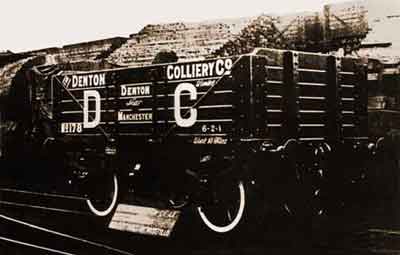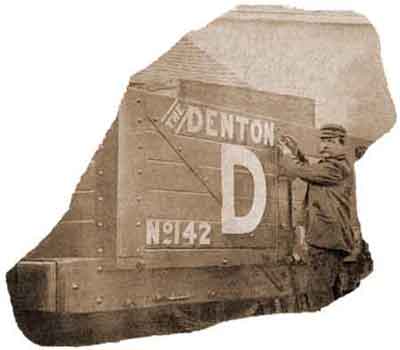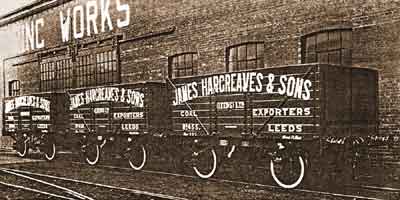
Coal waggon No. 178.
Waggon specification
Waggon No. 178 was from a batch of 20 waggons built in Wakefield, Yorkshire, in late 1909, numbered 171-190, and
registered with the London and North Western Railway Company. These waggons were fitted with side and bottom doors, Attocks 46A axleboxes and brakes at both sides.
They had no end sills i.e., the floor was cut back and the end sheeting sat directly onto the headstock). The average tare weight of these waggons was 6 tons 2 cwt 1qr
with a capacity of 10 tons.

Coal waggon No. 178.
Waggon livery
Good red body, black ironwork, white letters, black shading.

Company-owned coal waggon, No. 142.
Closure of Denton Colliery & Tramway
On the 3 May 1926 the General Strike started and for the duration of the strike it was impossible to maintain the underground workings of Denton Colliery.
Although the colliery did re-open after the strike the damage caused to the workings during the strike proved to be insurmountable and on the 2 Dec 1929 Denton Colliery Co Ltd went into voluntary liquidation.
♦ ♦ ♦
James Hargreaves & Sons (Leeds) Ltd
This company was a firm of coal merchants, exporters, and factors (i.e. they transacted business or acted for other companies) and to facilitate this they operated a large fleet of coal waggons.
It is known that Denton Colliery Co Ltd used their services. For example, in 1923 25 new waggons, numbered 426 to 450, were delivered empty to Denton Colliery via Heaton Norris, Stockport.
From Heaton Norris the waggons were taken along the Stockport and Guide Bridge Line of the London & North Western Railway to Denton Colliery Sidings at North Reddish.
From there they were then hauled along the tramway to Denton Colliery by one of their locomotives. These waggons had a capacity of 12 tons, so when filled the 25 waggons held 300 tons of coal.
There are no records showing where this coal was delivered to but it could have been either for domestic use or taken to Liverpool for export.
50 of these new waggons were labelled for return to a particular colliery when empty, the instructions being printed in white on a small black tin plate, which could be removed if desired.
The waggon numbers and instructions are as follows:

Hargreaves' coal waggons
The three waggons are numbered, from right to left, 455, 456 & 457.